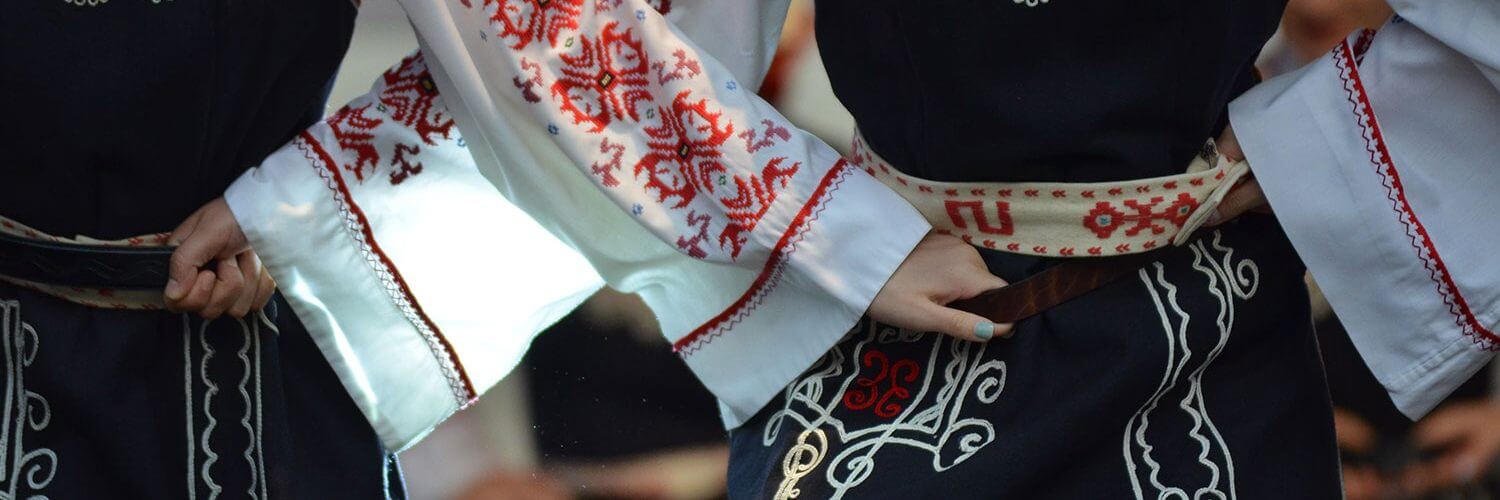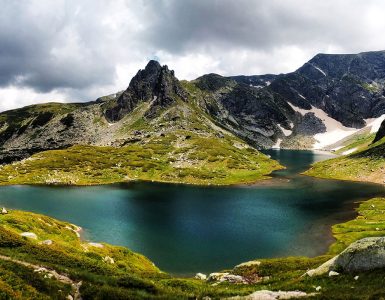All About the Culture in Bulgaria
Bulgarian Culture detailed information about Bulgaria, it’s festivals, music and dance handicrafts and much much more.
The Bulgarian lands are ancient crossroads, inhabited from ancient times and they remember many ancient civilizations. The state of Bulgaria is 1300 years old showcasing over a millennium of history. According to statistics, it is the third most cultural country, only topped by Greece and Italy, because of the number of its archaeological monuments. Bulgarian culture is a mix mostly of Thracian, Slavic and Bulgaria cultures, but there are also Byzantine, Turkish, Greek, Roman, Gypsy, and other influences.
The land of Orpheus and Spartacus, and the cradle of Slav culture, Bulgaria was bound to produce many men of great achievement, and this was the case during the last thirteen centuries. The country also flourishes with many top examples of the Thracian treasures and the mysterious burial tombs, old applied arts and the wonderful frescoes.
Festivals
The country still has ancient celebrations and customs dating to the times when men hoped to soothe the wrath of the elements and feared their immense unknown power. Based on those traditions, folklore, as part, most manifestations of Bulgarian culture, is full of gaiety and beauty and must be seen and experienced. The particular mystical voices of The Bulgarian singers’ voices, along with frenetic colorful costumes and wild dances, will amaze and amuse the traveler.
Dancing on fire is one of the most outstanding mysterious and old rituals. Barefooted dancers walk and dance on embers. This rite of faith is performed in order to expel illness so that participants can gain health and fruitfulness.
The festival of Roses is another remarkable celebration performed annually during the first weekend of June in the Rose Valley, which is near the town of Kazanluk (at the foot of the Balkans). At the beginning of the month, writers, actors, circus performers, singers, and artists gather at the Queen Rose Beauty Contest, which also takes place in Kazanluk. Apart from being funny and colorful, there is a good reason to celebrate as every perfume company uses Bulgarian oleaginous roses, which yields 70% of the world’s attar of roses, as an essential raw material.
In the times of the Roman Empire, the Thracian Rose was just one of many roses that were grown in the Thracian Provinces. The Count de Gruye brought the Damascus rose from Syria to the valley of Kazanlak in 1270. It is believed by experts that the roses and rose oil owe their uniqueness to the climate and good soil. In February when roses bud, the conditions are ideal and in May and June when the humidity is right the blossoms are gathered by experts.
The beginning of spring is marked by the Kukeri Carnival, a lively festival of costumes and masks that takes place in Dupnitsa and Pernik. The wheat, heavy with grain, is represented by the heavy swaying of the main mummer. To drive away sickness and evil spirits bells are worn around the waist.
Music and dance
Music is a lively part of the Bulgarian culture. The dances that are undertaken have complicated choreographies that fit in with the very fast, irregular rhythms. The folk music is unique and contains complex harmonies and the dances which are mostly line or circle dances known as horo are performed singly or in pairs. Traditional music and dance which are still often performed in countryside festivals and weddings are not very popular with Bulgarian city youth.
Musical instruments include:
- A gadulka which is violin-like.
- A gaida is a bagpipe type of instrument.
- A kaval which is a rim blown flute.
- The tambura is guitar-like.
- A tapan which is a large two-sided drum.
- The zurla which is another woodwind instrument.
Experts are still trying to explain the mystery behind the incredible range that both men and women singers reach.
Pirin Sings” and “Rozhen Sings” are two of the worldwide well-known folk festivals. There are around 4,000 performers in each festival and approximately 150,000 visitors from abroad and Bulgaria gather to witness and learn about the colorful ancient traditions and cultures of Bulgaria.
Handicrafts
Recently emerging from domestic life, applied crafts have become arts in their own right. Colored rugs and carpets, embroidery, beautifully painted pottery, delicately ornamented fretwork, and unique jewelry.
The Permanent National Exhibition of Folk Art in Oreshak near Troyan, the Samovodene Market in Veliko Turnovo, and the Etura architectural and ethnographic complex near Gabrovo are examples of world-famous places amongst others where handicraft is exhibited. They all show different types of pieces, such as Troyan pottery sets, beautifully embroidered silk pieces, wood carved wine vessels, pieces of original silver jewelry, brightly colored carpets or Rhodope rugs.
Experts have found Seaside Neolithic and Paleolithic cultures’ traces along the southern coast of the Black Sea, whose remains show a high-level mastery of materials such as stone, bronze, iron and china clay. The oldest gold in the world dates back 8000 years and is of Thracian origin.
In the Winter of 1985-1986, Rogozen treasure was discovered in northwest Bulgaria. It contained 165 silver pieces, vessels from specific workshops in Anatolia, Eastern Greece, Southern Thrace, and North-western Thrace and was largest single collection of ancient treasure ever found in southeastern Europe.
Bulgaria Culture in Figures
- 49 (2002) Libraries
- 319,403 (2002) Library Readers
- 34,676,995 (2002) Volumes in Libraries
- 3,554,515 (2002) Museum Visits
- 220 (2002) Museums
- 5,766,707 (2002) Museum Exhibits





